Part 1 – Marae Anini, Parea, Huahine, French Polynesia
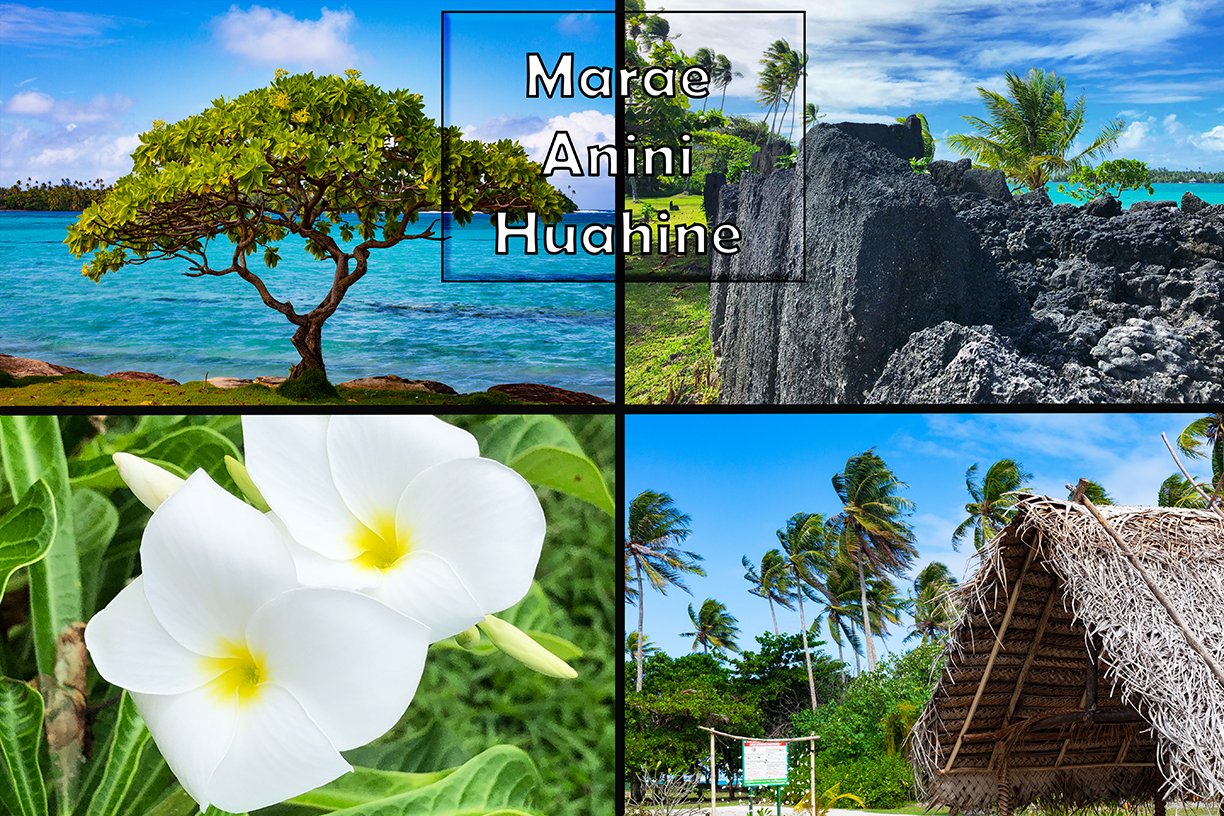
Marae Anini Huahine - © Diane Macdonald - All Rights Reserved
Each place we visited on our walks was special in its own way, and I definitely have enough material from the 4 walks to cover 4 different travel blog posts.
The walk to Marae Anini is only ¾ of a mile each way, an easy walk from Hotel Le Mahana. The site is well maintained, and there is no charge for entry to visit this archaeological site steeped in Polynesian culture.
So, what is a marae? It is an ancient temple where the people worshiped their ancestors and their gods and offered human sacrifices to them. (Yes, you read that correctly - human sacrifices!)
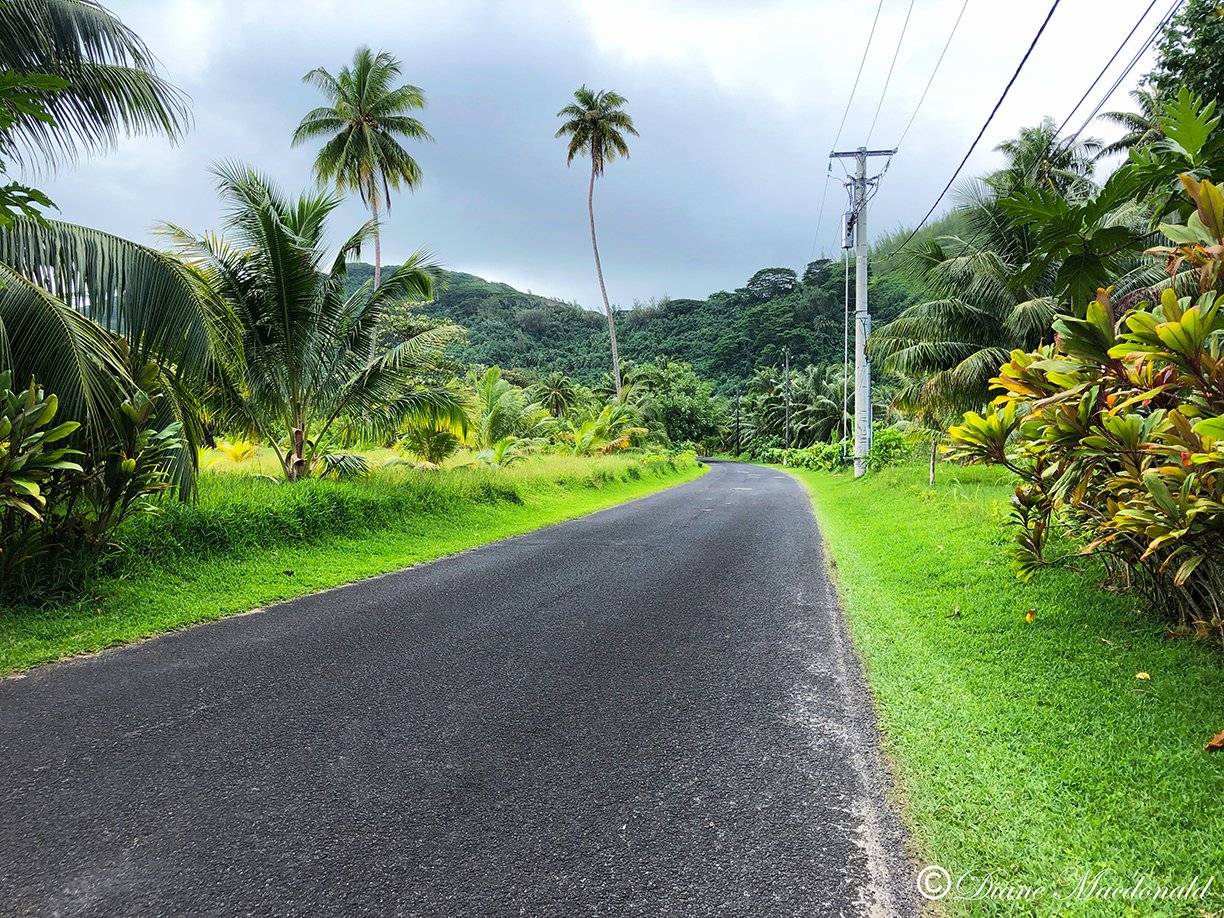
The main road from Le Mahana to Marea Anini - © Diane Macdonald - All Rights Reserved
There is no sidewalk, but the road is not a busy one; you are more likely to encounter bicycles, scooters, dogs, cats and chickens than cars! Still, keep an eye out for distracted tourists whizzing by!
We have palm trees here in northern Florida, but I was fascinated to see all the coconut groves on our trip. There is just something about them! Each grove is its own work of art, because no two are exactly the same – the way they dip and sway in the tropical breezes.
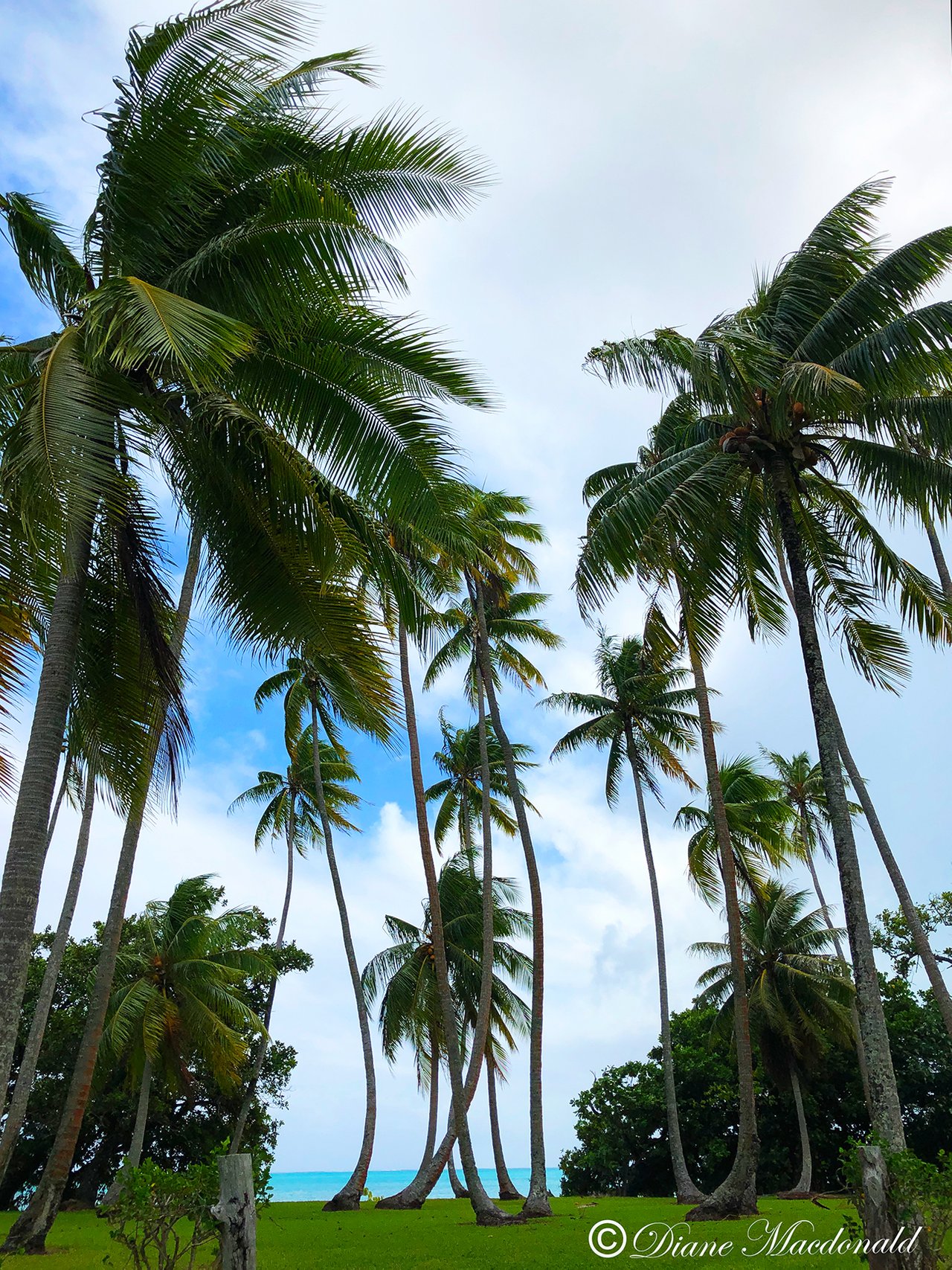
A coconut grove, Huahine: © Diane Macdonald - All Rights Reserved
Before reaching the Marae Anini, which will be on the right hand side of the road after you turn right from Hotel Le Mahana, you will come across a stone circle on the left. What this is, remains a mystery to me, and no one I asked had any idea either! We stopped to get a few shots before heading off down the road towards the marae, which is well marked. Does anyone know why they are there? A Google search has proved fruitless, so I am left wondering why they are there.
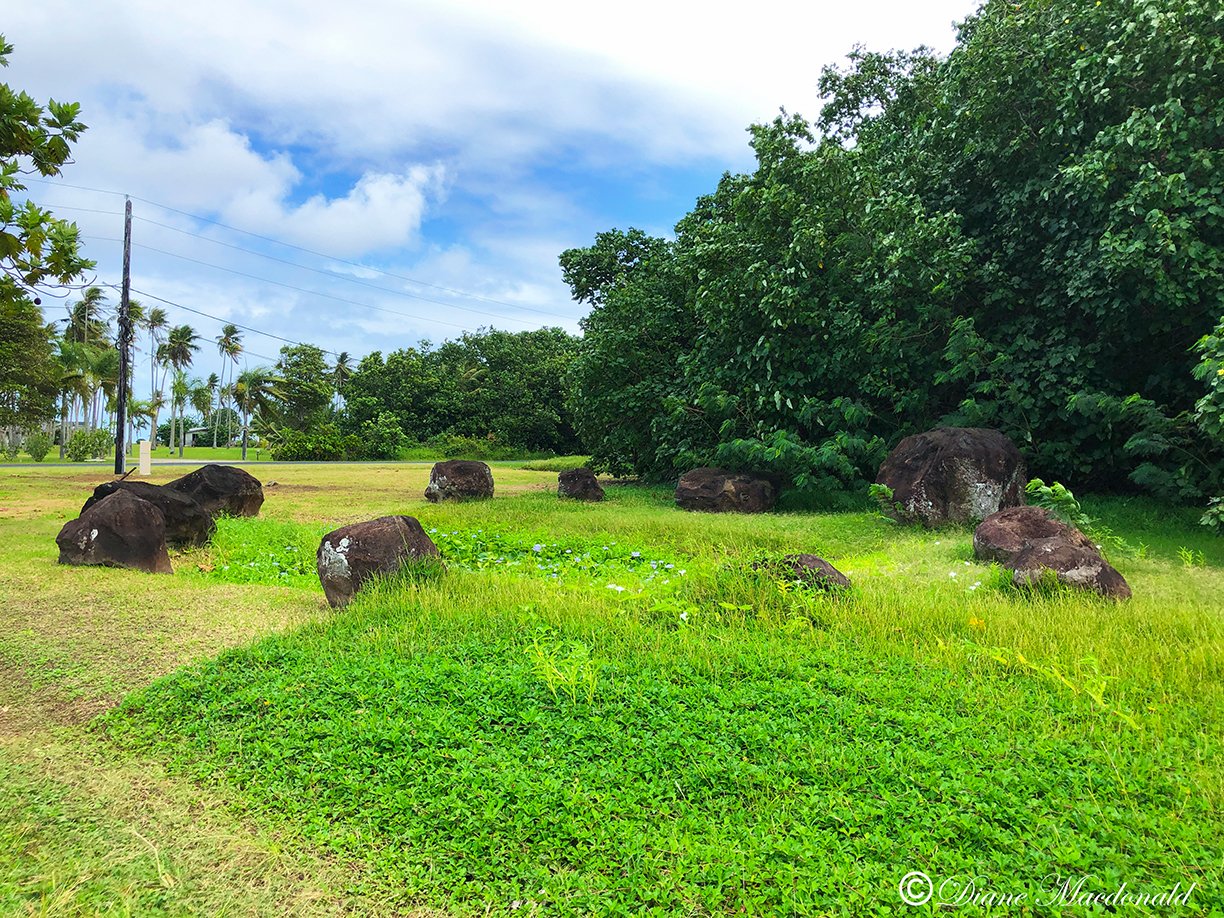
A stone circle, Huahine© Diane Macdonald - All Rights Reserved
Whether you are walking or driving, Marae Anini should be quite easy to find, as it is well signposted.
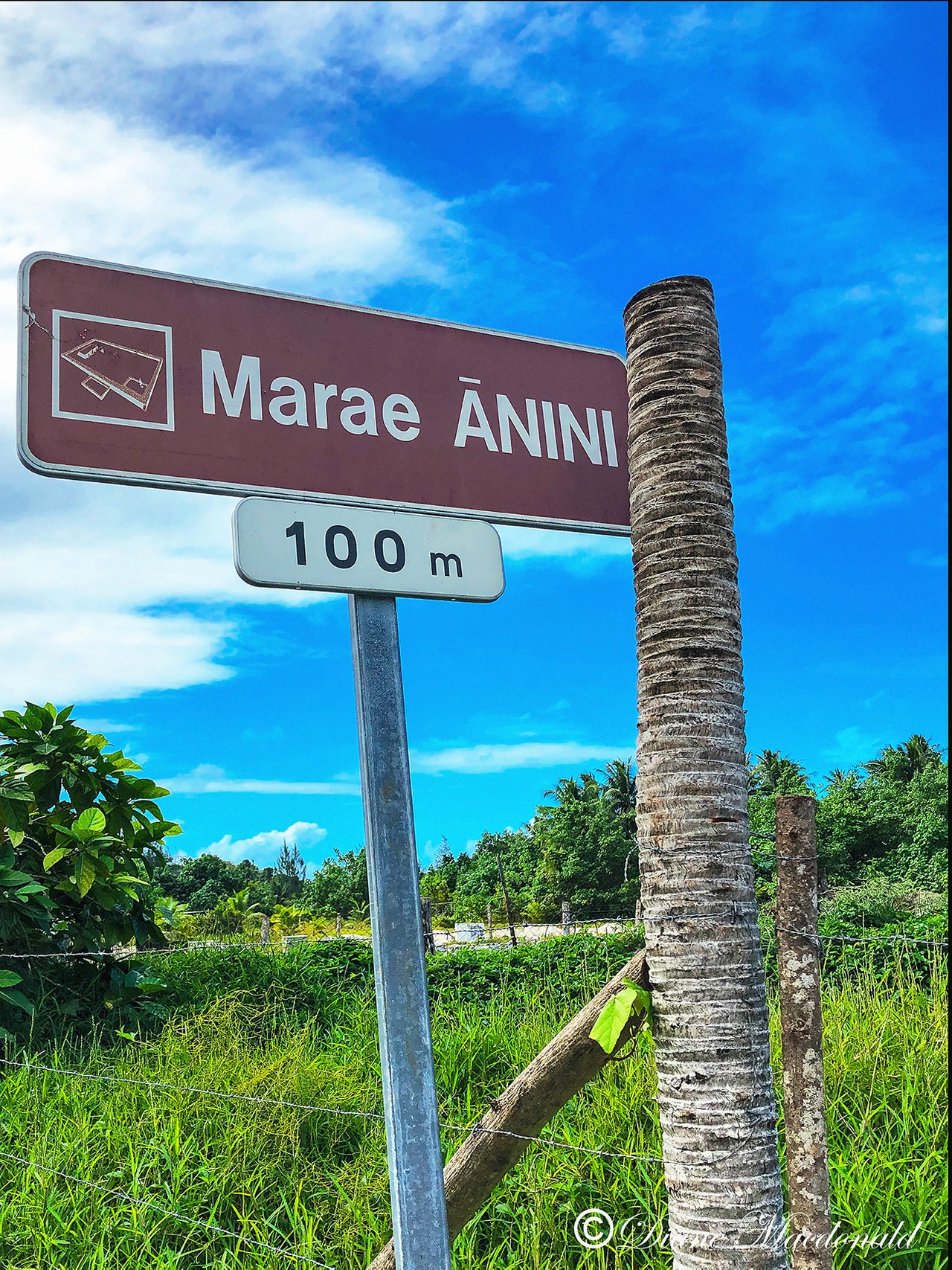
Signpost to Marae Aninin, Huahine: © Diane Macdonald - All Rights Reserved
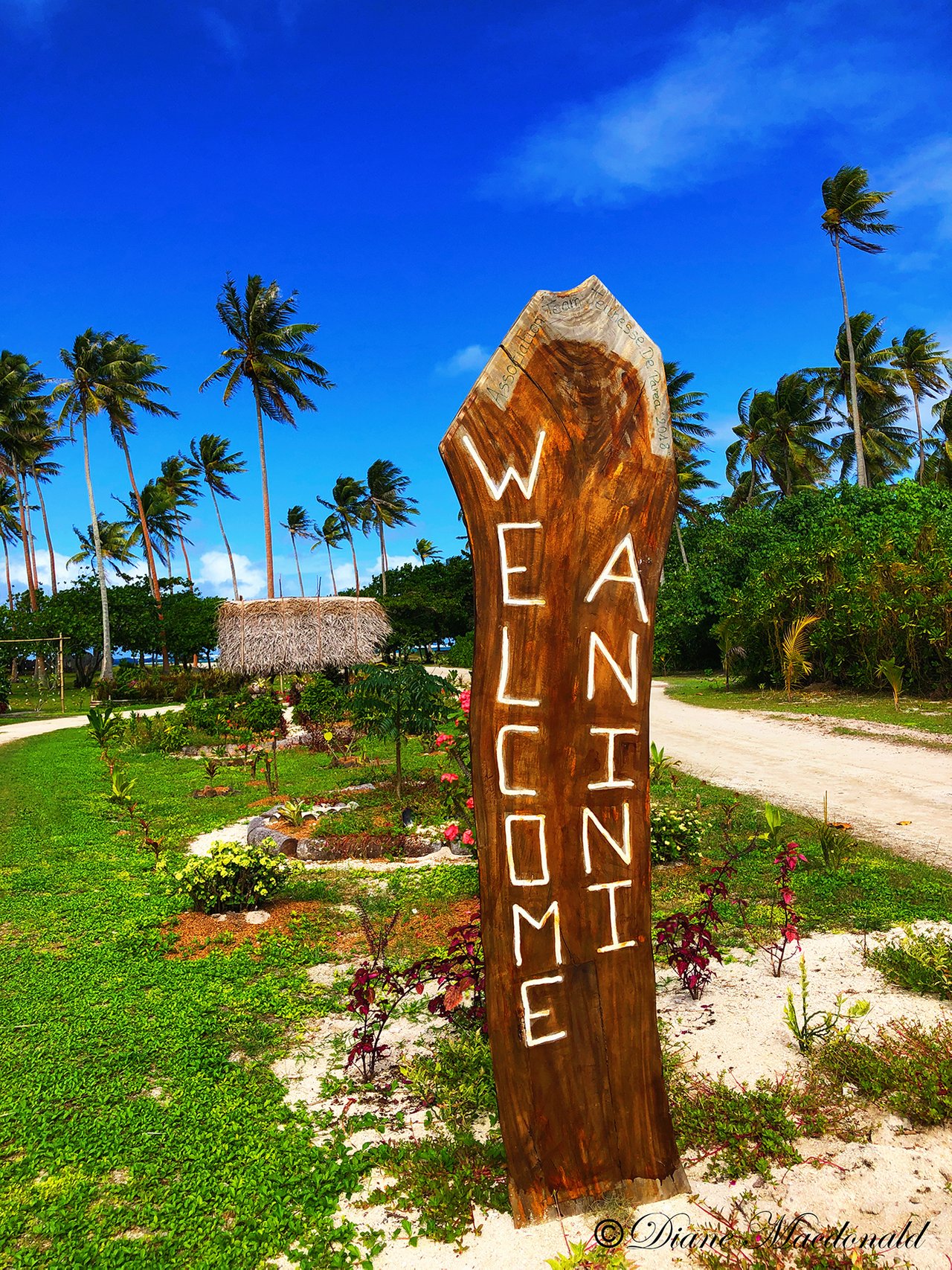
A welcome sign to Marae Anini, Huahine: © Diane Macdonald - All Rights Reserved
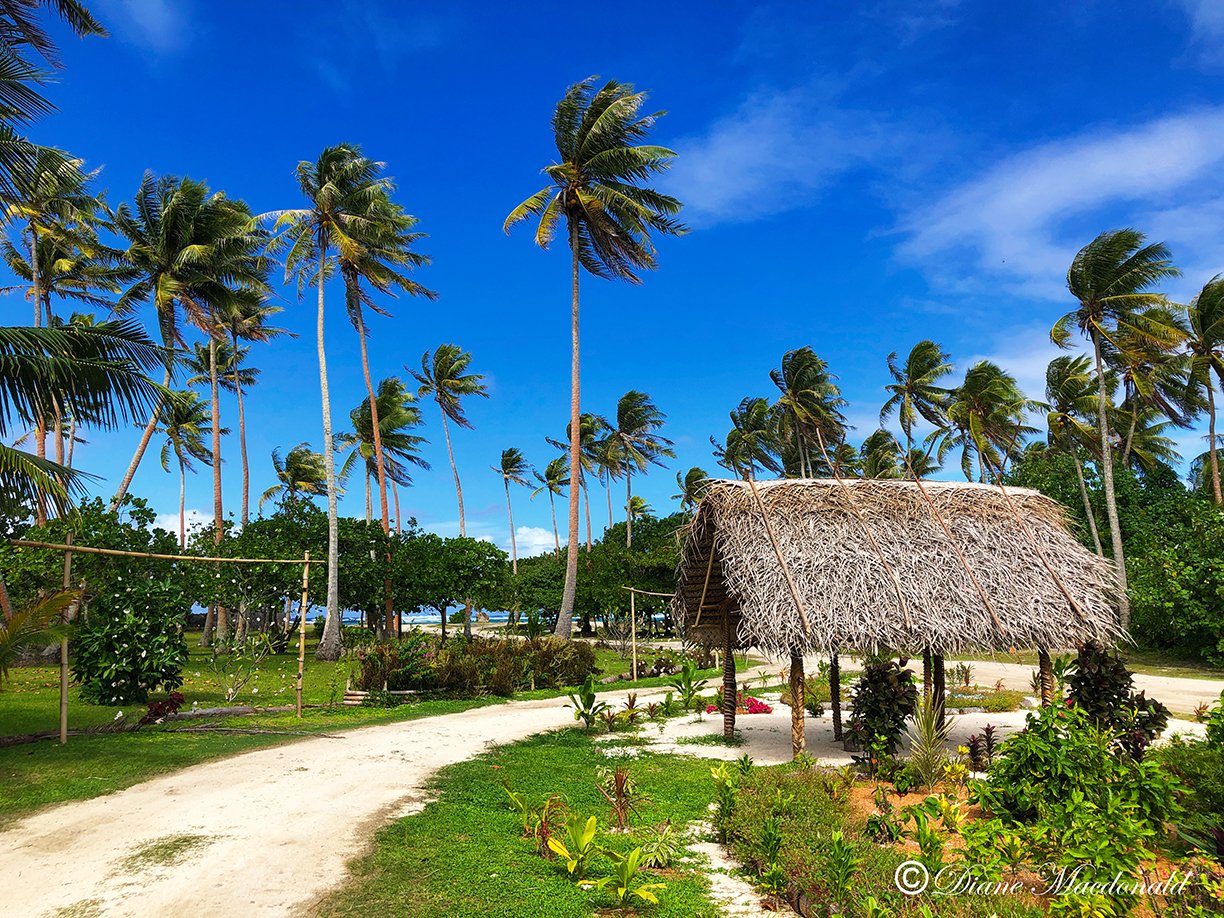
The park road leading to Marae Anini, Huahine: © Diane Macdonald - All Rights Reserved
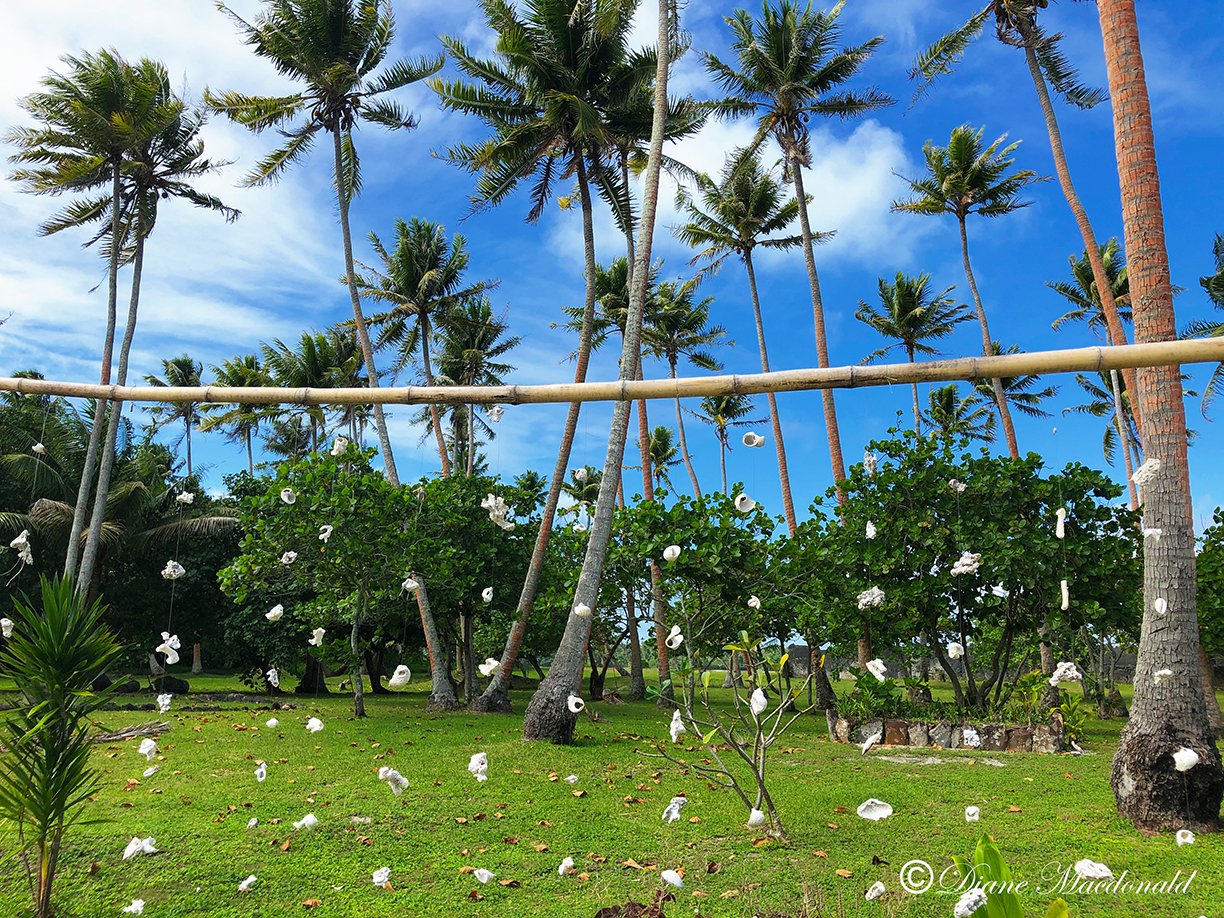
© Decoration of hanging shells on roadside leading to Marae Anini, Huahine: Diane Macdonald - All Rights Reserved
There is a small thatched roof shelter inside the entrance to the park, and alongside the dirt track road leading down to the marae, you will see decorations of hanging seashells.
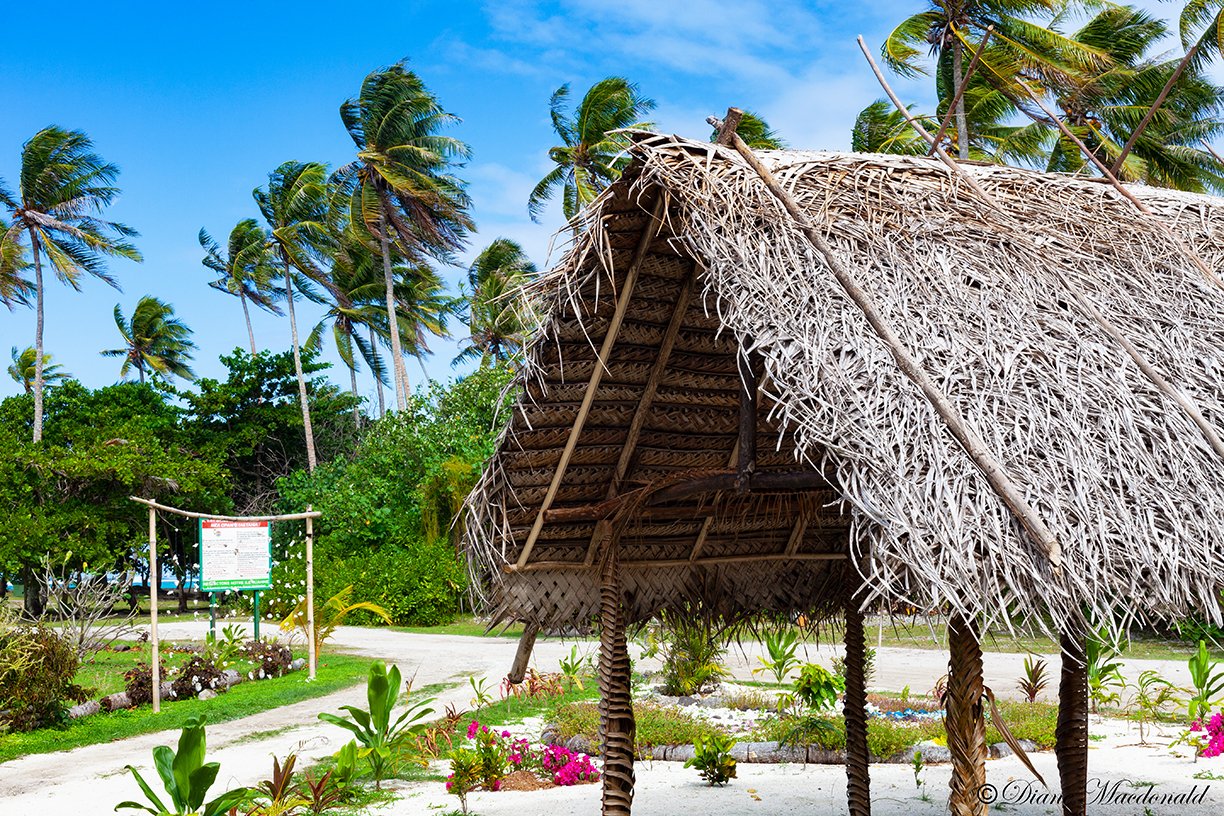
A shelter at Marae Anini, Huahine: © Diane Macdonald - All Rights Reserved
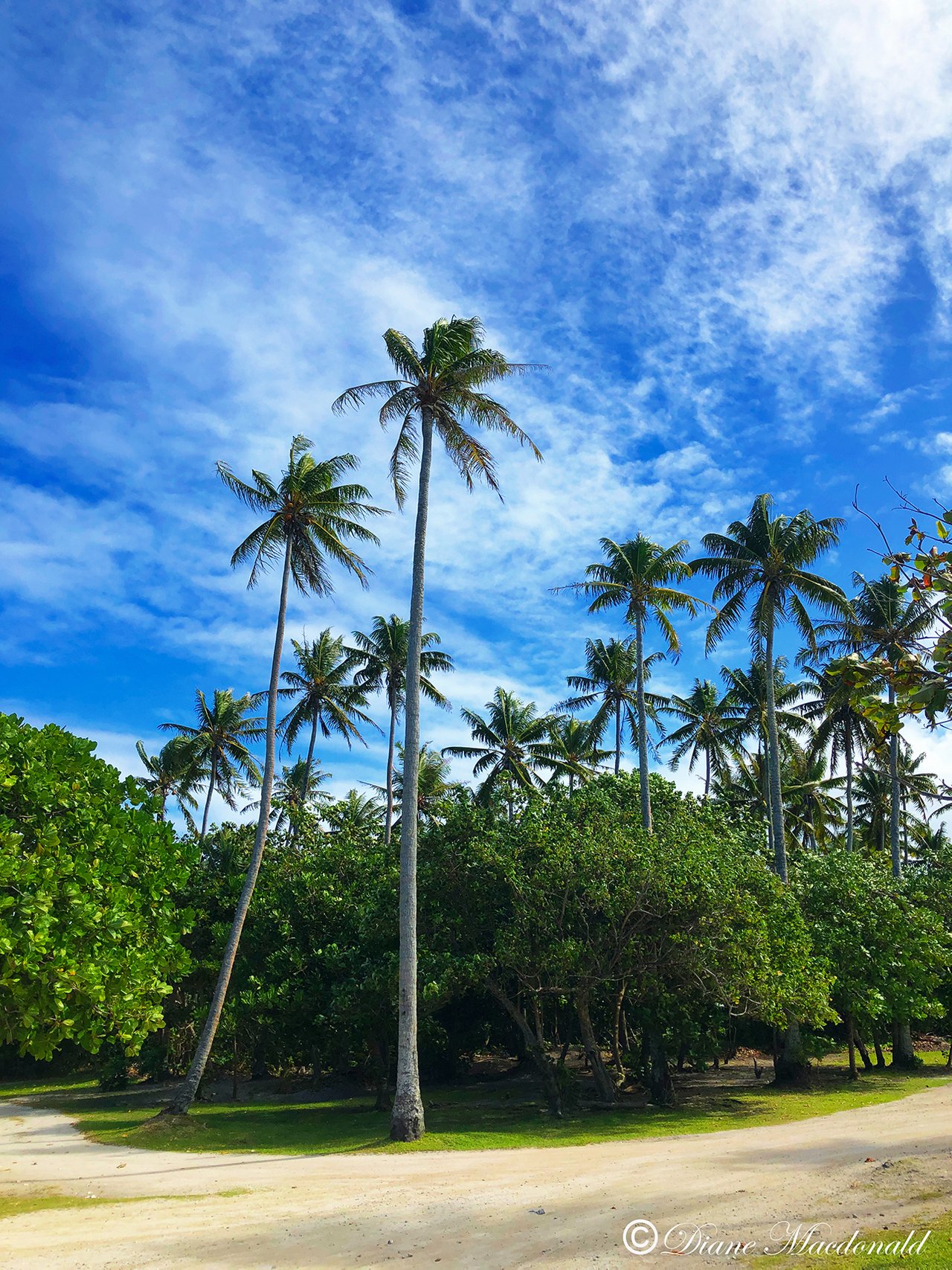
A coconut grove at Marea Anini, Huahine: © Diane Macdonald - All Rights Reserved
Marae Anini is not as old as some of the other temples on Huahine. It dates back only to the end of the seventeen hundreds when it was built on royal property for the king's son, Ta-aroar'i, who tried unsuccessfully to bring back the old civilization which had been banned by Christian missionaries.
This particular temple was dedicated to Hiro (the god of thieves famous for the legend which says he cut Huahine into two halves with his canoe) and to Oro, the god of war. Worshipers hoped that they would be rewarded with mana (a divine force which would bring health, peace and fertility.) Human sacrifices were offered to Oro.
For some reason Huahine has more marae sites than any of the other islands in French Polynesia, and most of them are concentrated around the sacred village of Maeva on Huahine-Nui (Big Huahine), where all the island chiefs amazingly once lived together in peace. There are more than thirty of these ancient sites around Maeva, but I will cover that story in another post. The sites around Maeva were built in a period of about 200 years from the mid 15th century until the mid 17th century, and there were also some reconstructions into the 18th century.
Marae Anini is situated right next to a beautiful beach (of course, because it was the king's property), so the marea is photogenic from any angle!
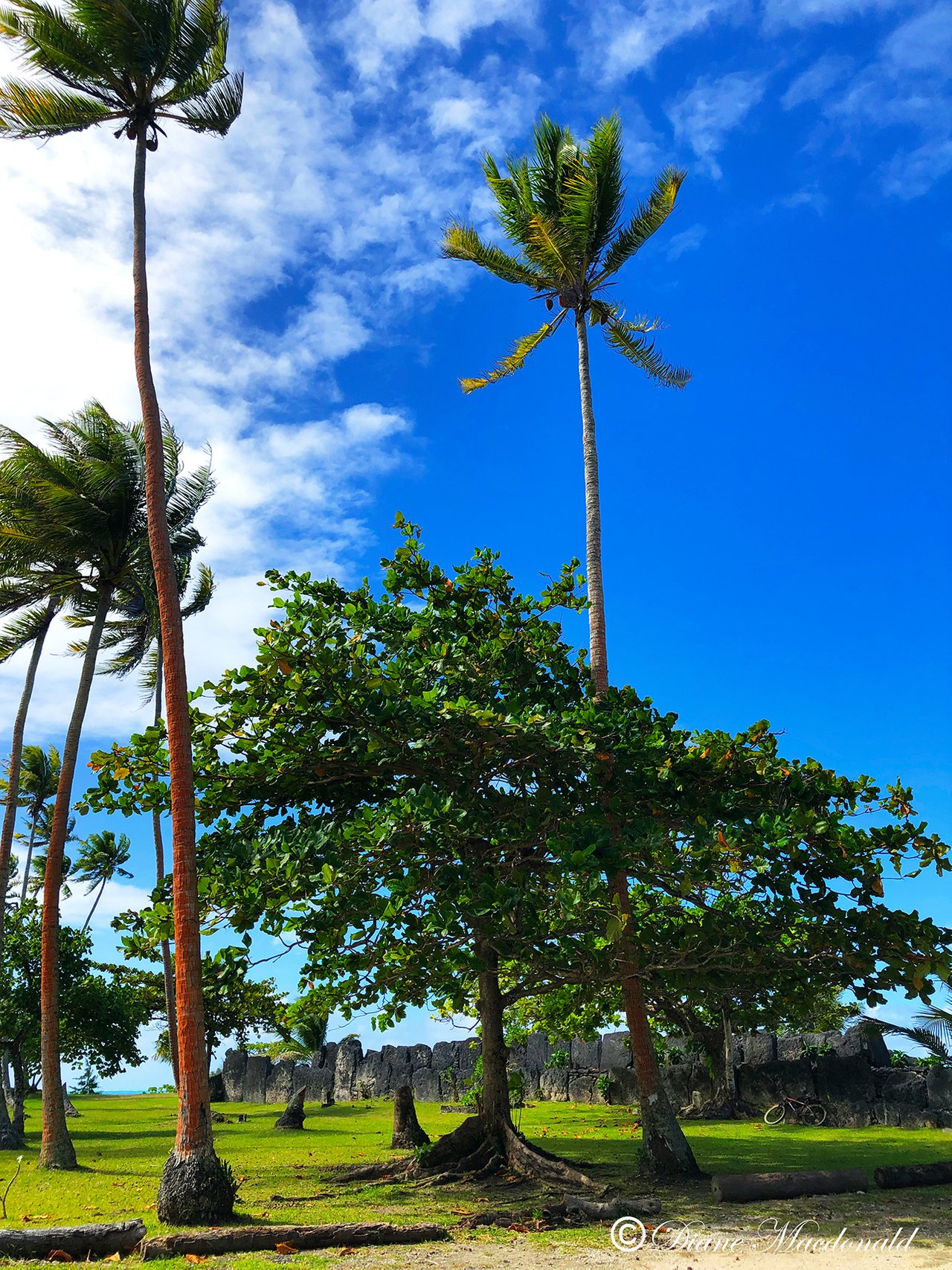
Marae Anini, Huahine: © Diane Macdonald - All Rights Reserved
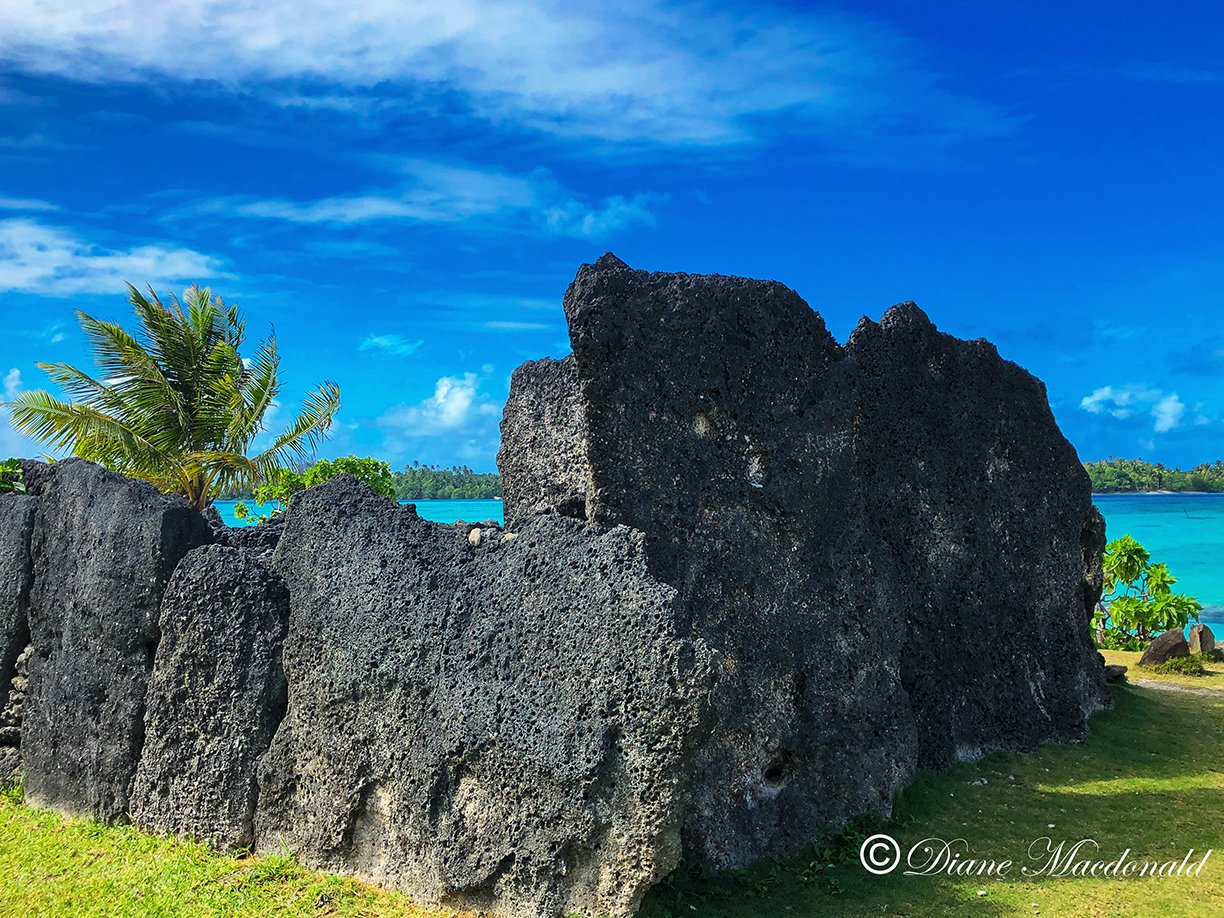
Marae Anini, Huahine: © Diane Macdonald - All Rights Reserved
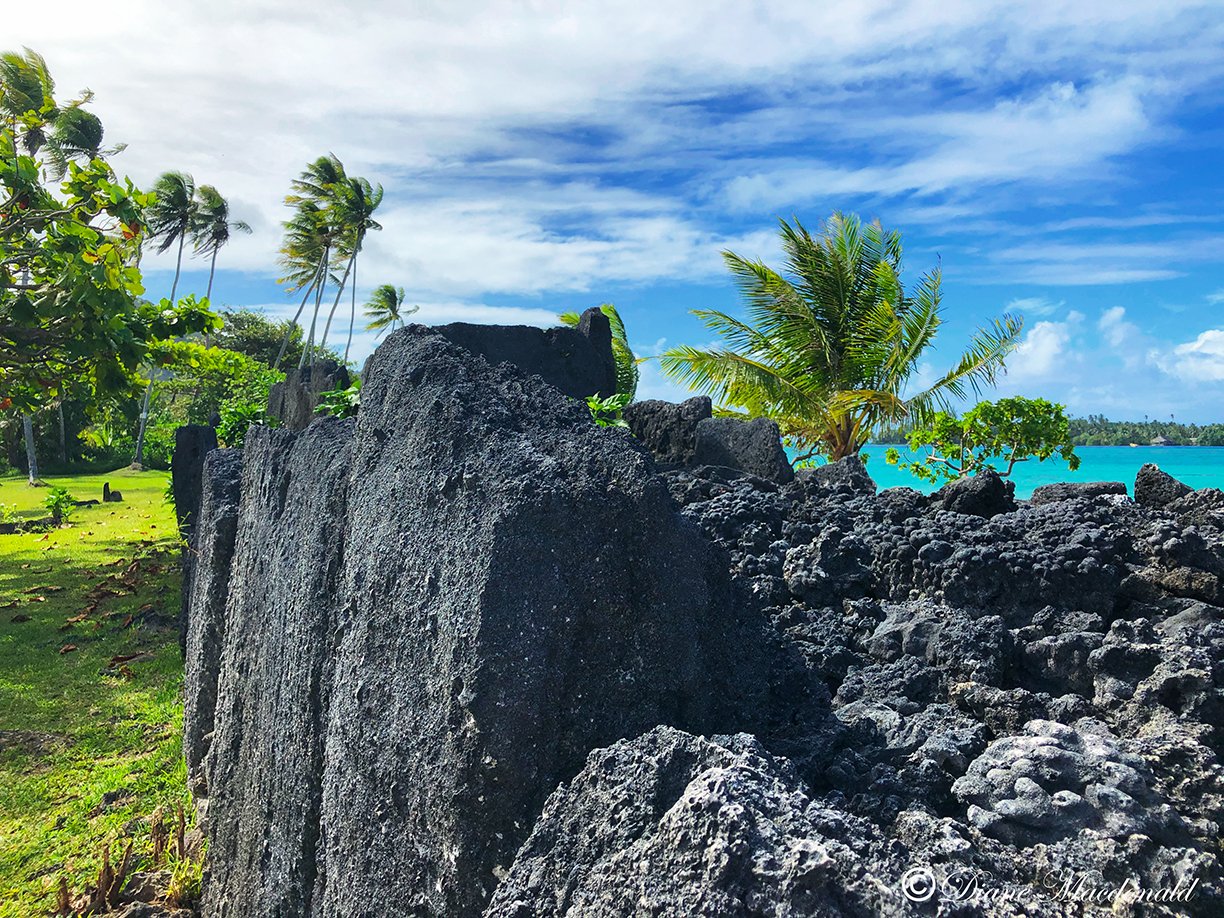
Marae Anini, Huahine: © Diane Macdonald - All Rights Reserved
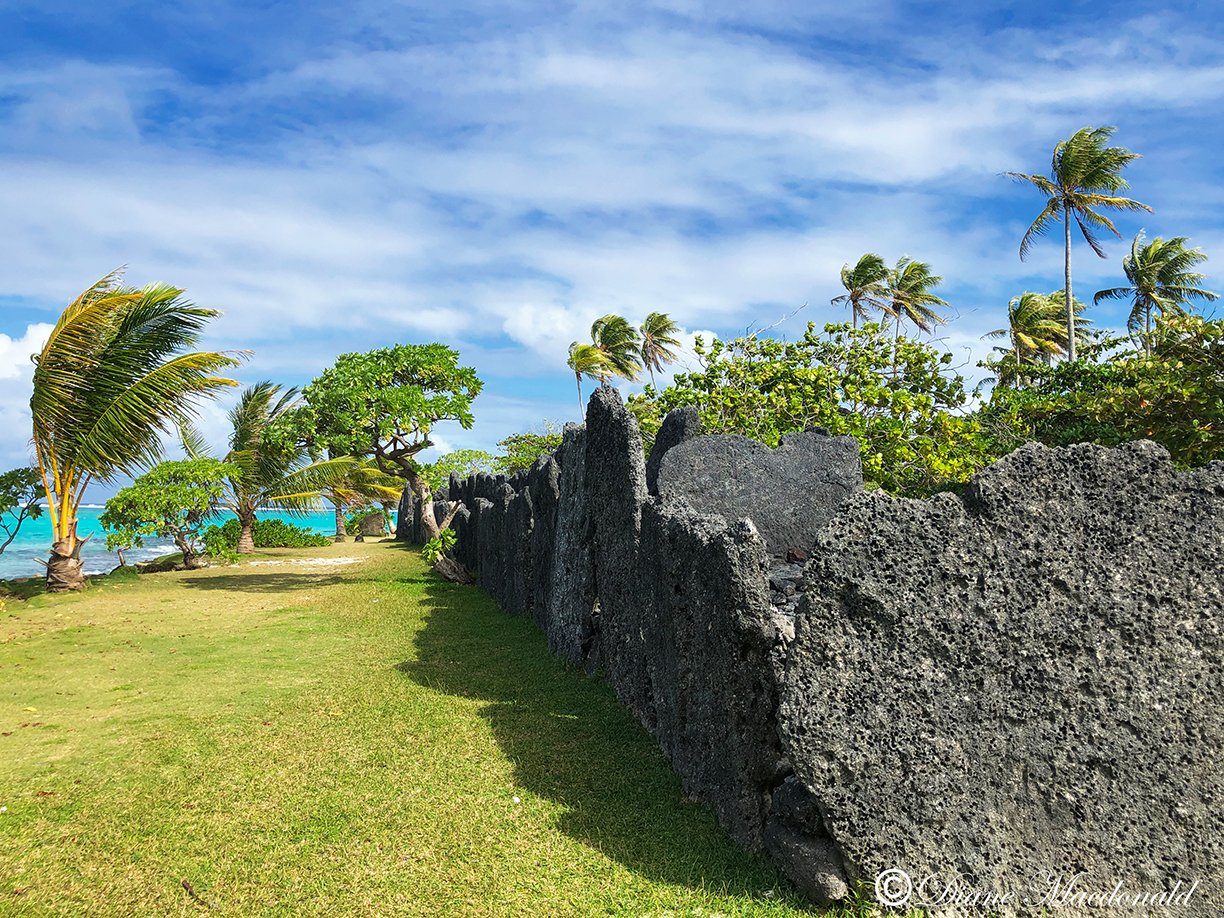
Marae Anini, Huahine: © Diane Macdonald - All Rights Reserved
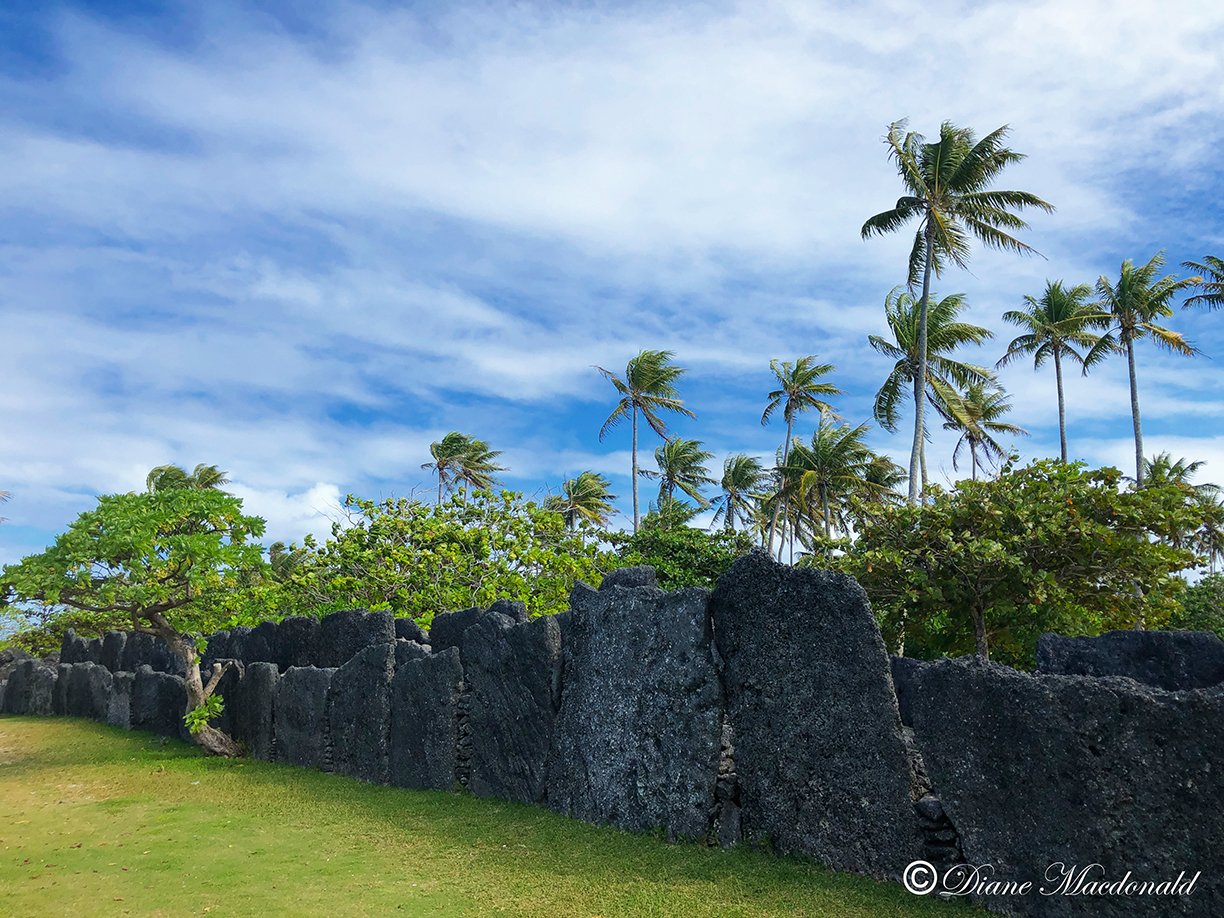
Marae Anini, Huahine: © Diane Macdonald - All Rights Reserved
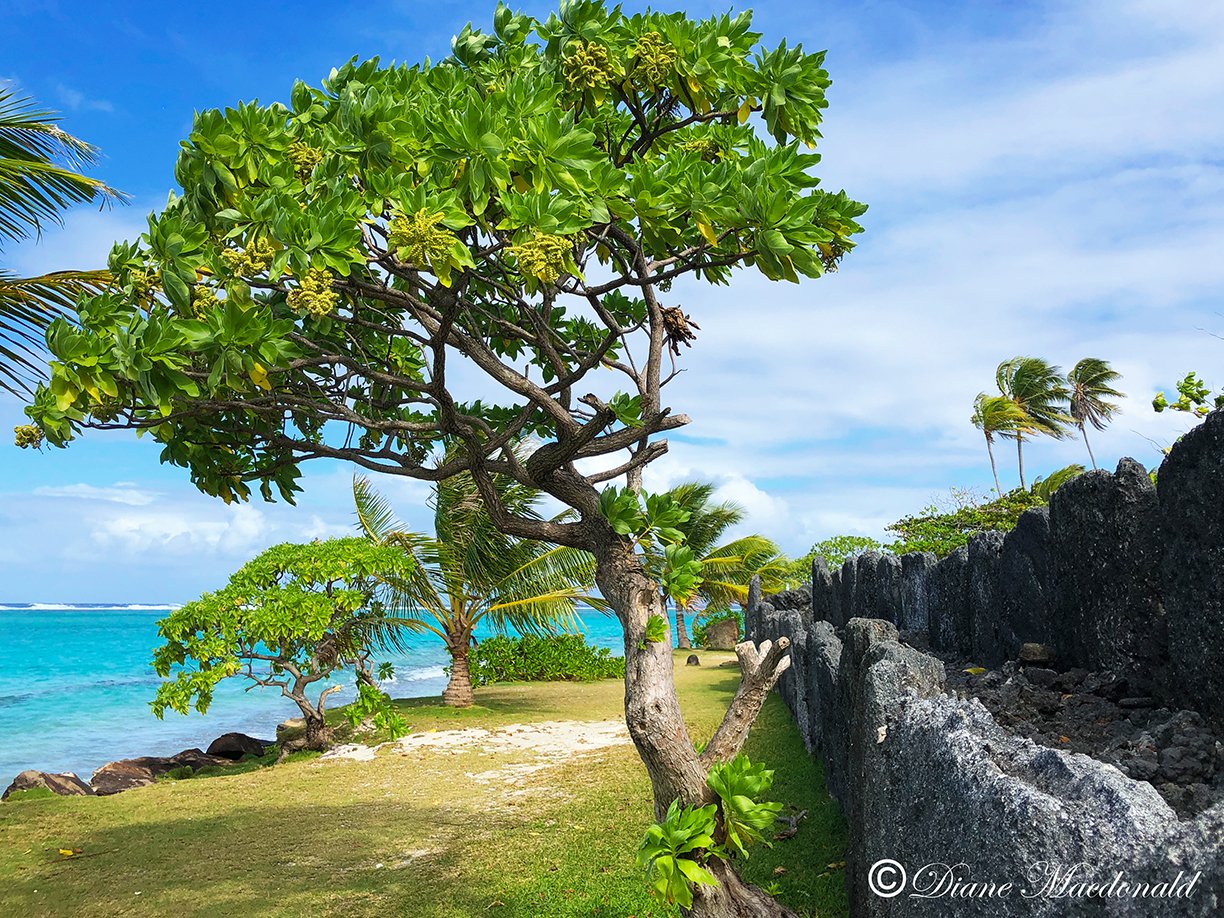
Marae Anini, Huahine: © Diane Macdonald - All Rights Reserved
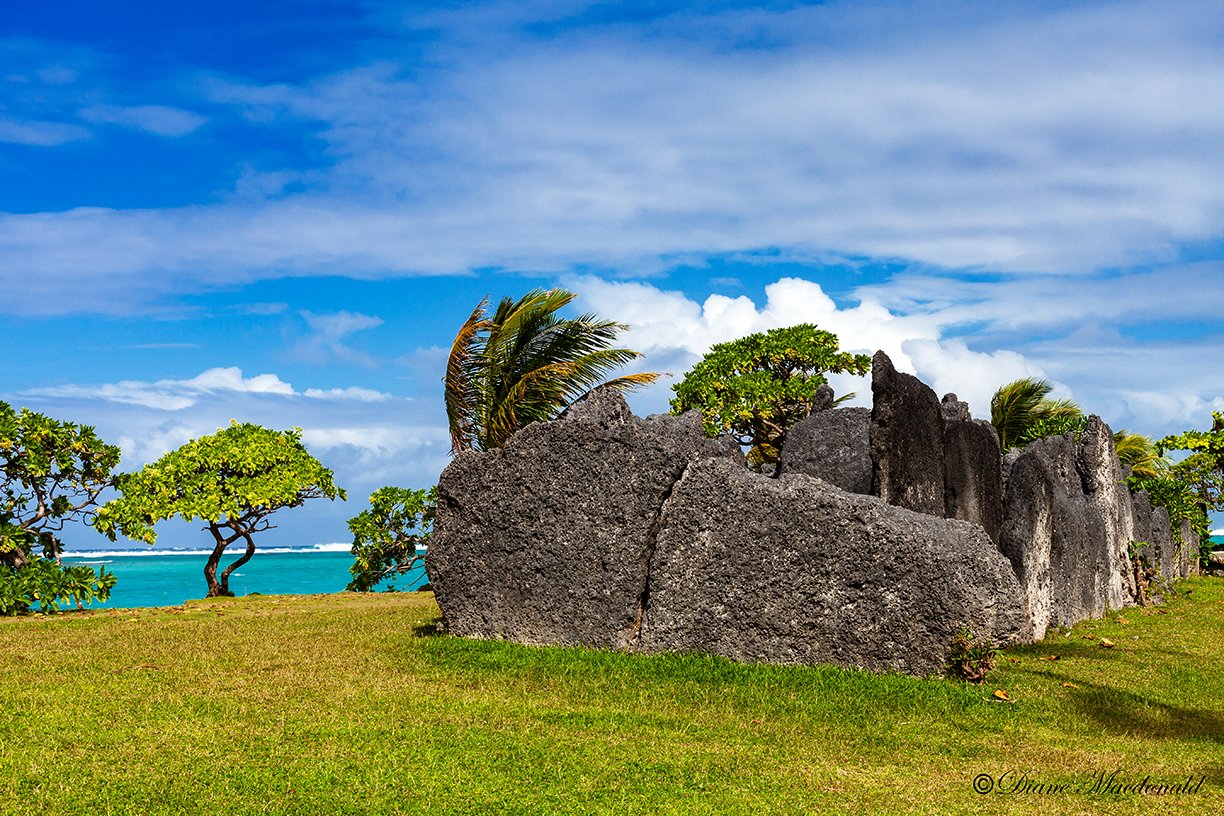
Marae Anini, Huahine: © Diane Macdonald - All Rights Reserved
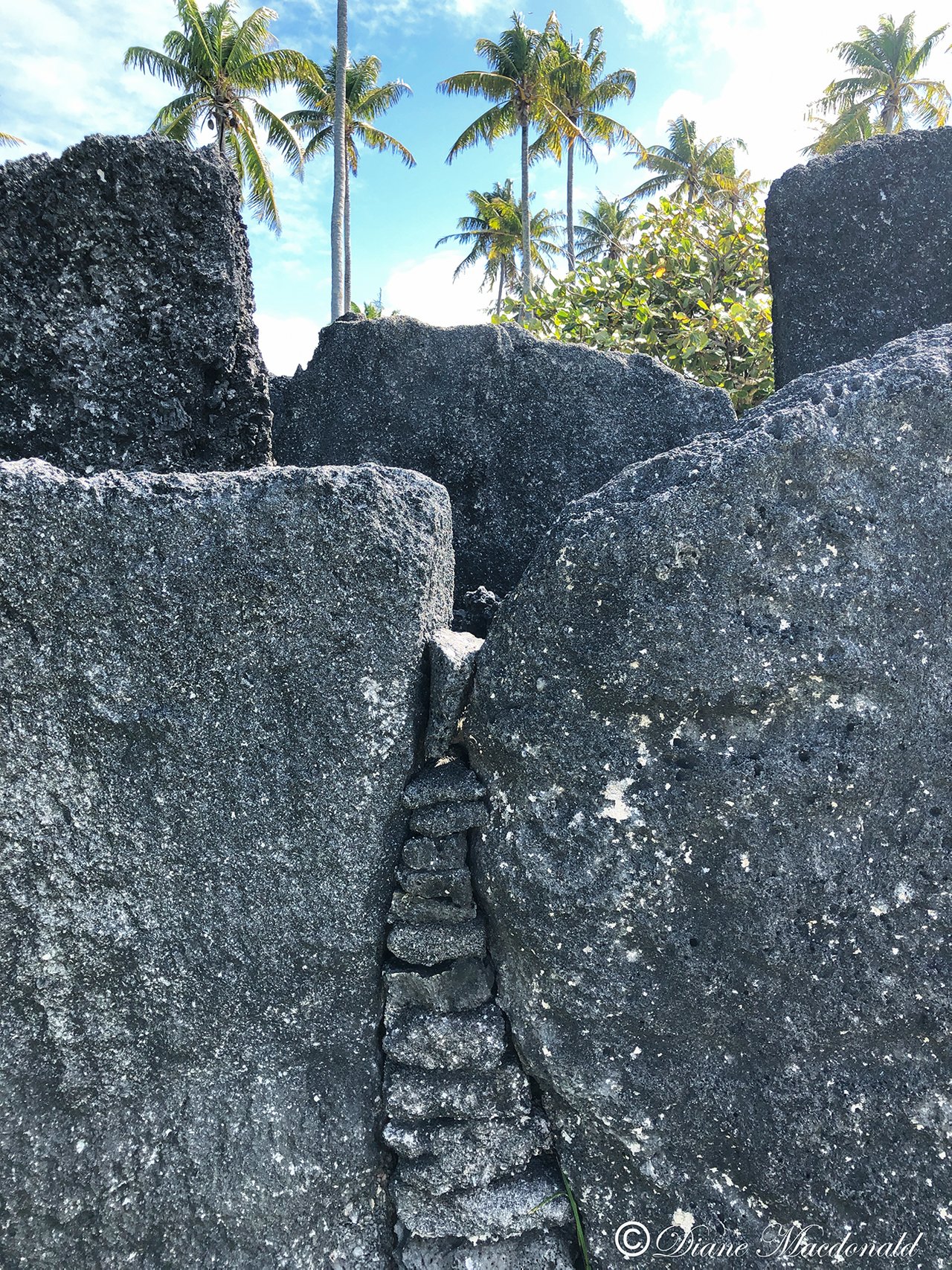
Close up of a wall, Marae Anini, Huahine: © Diane Macdonald - All Rights Reserved
I have no idea who struck out the wording from this sign or why! Any guesses? I suppose it was vandals, although it's the only sign of vandalism we saw anywhere on the islands! The top sign is in French, and the bottom one in English. It's the usual warning about leaving valuables in your car, but it also serves as a warning to surfers that the pass is dangerous! Passes are openings between the small motus where the tides from the ocean come rushing into the quiet lagoon at high tide, and out again at low tide!
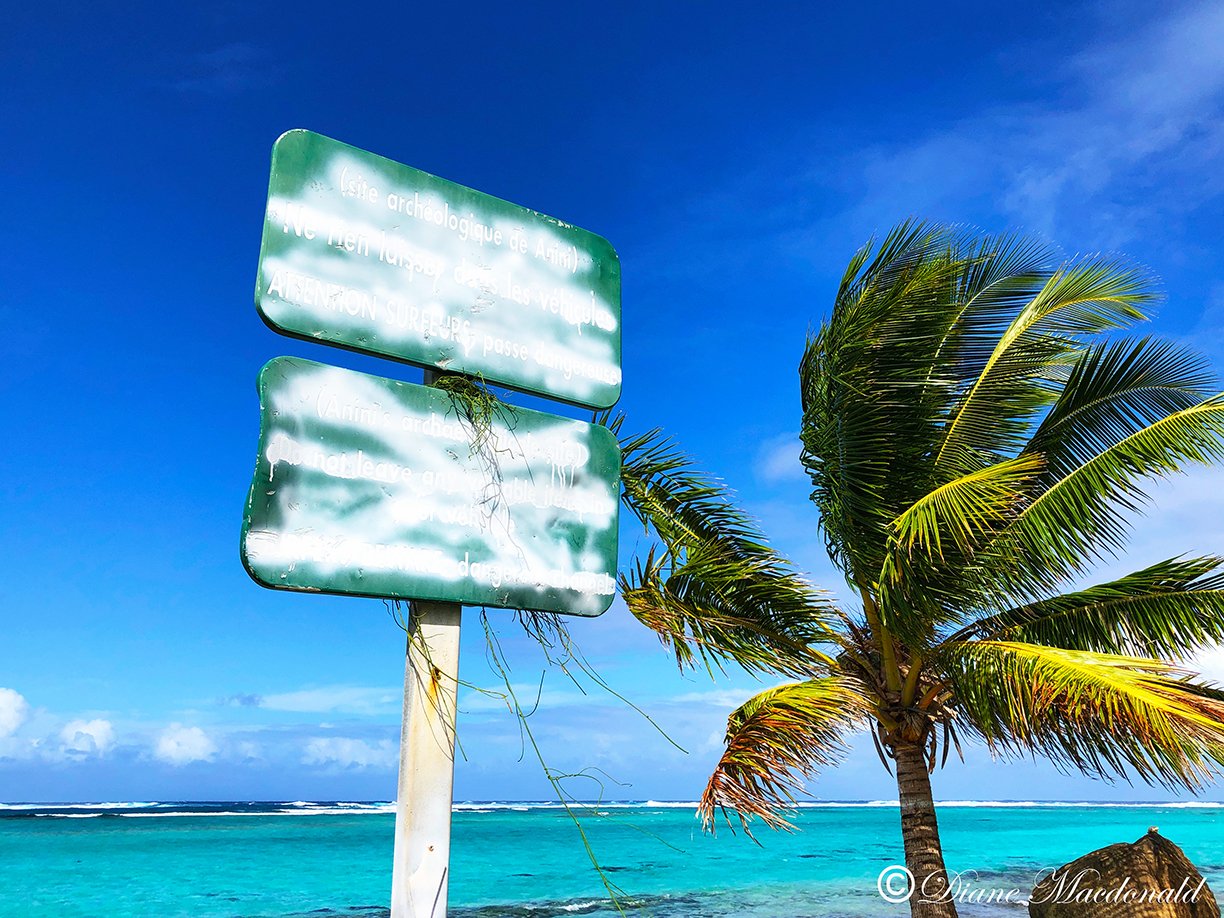
© Diane Macdonald - All Rights Reserved
Perhaps these were the last scenes that a victim of human sacrifice saw. Very sobering!
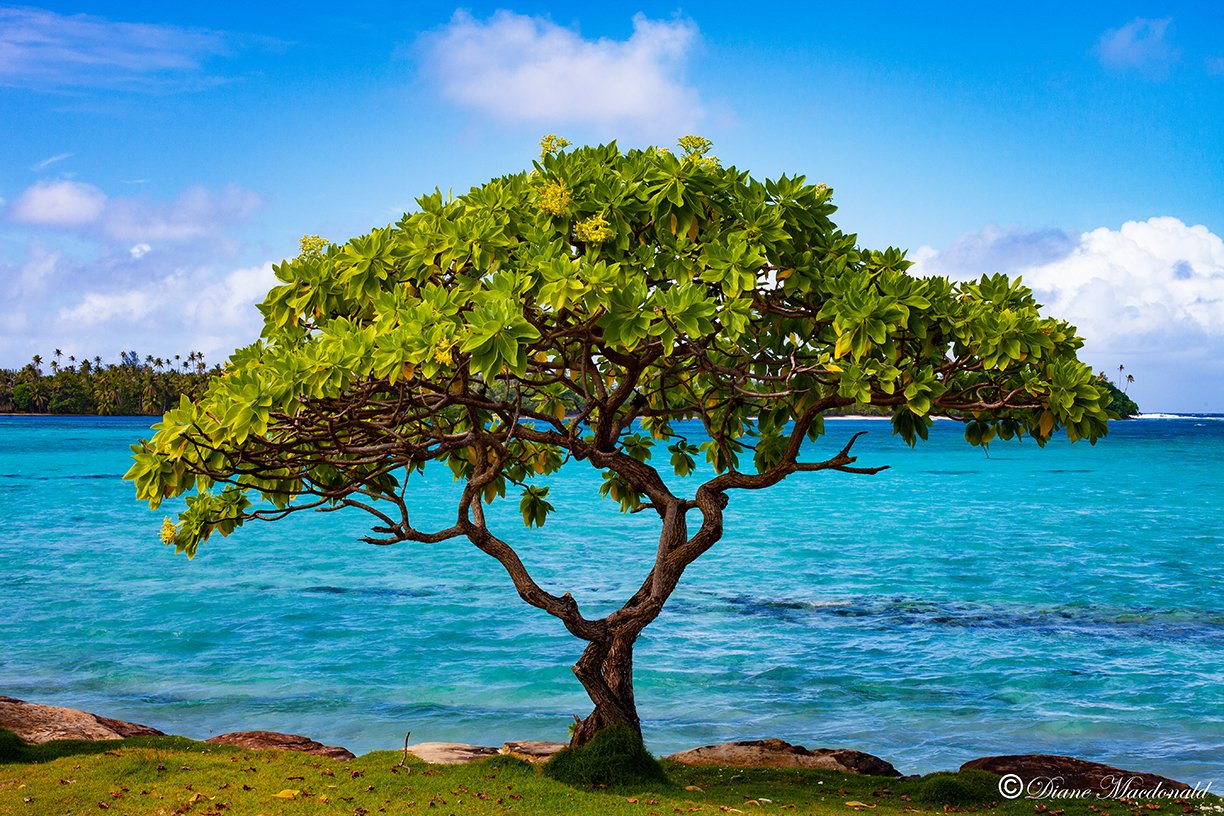
A tree by the lagoon at Marae Anini, Huahine: © Diane Macdonald - All Rights Reserved
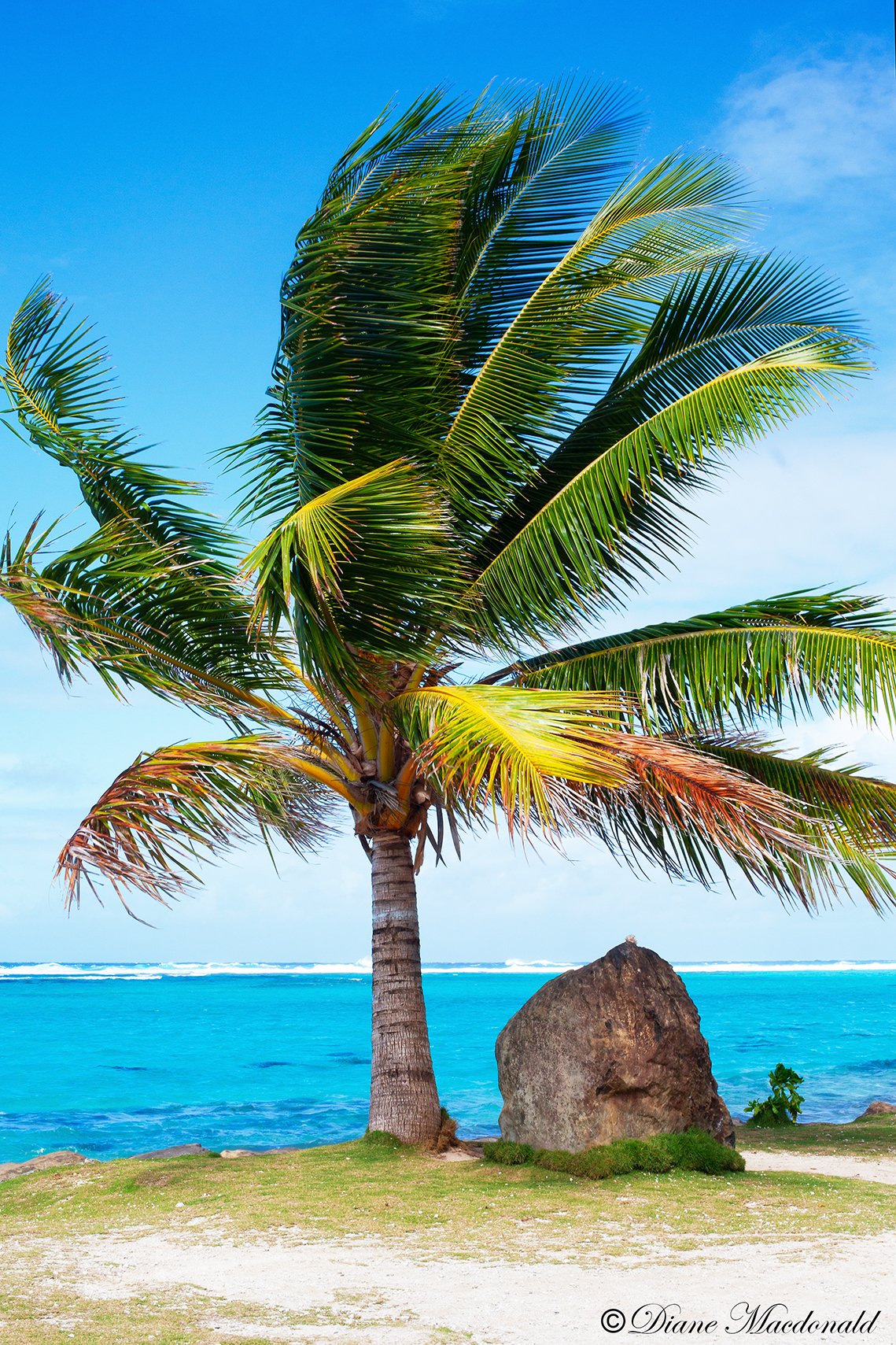
A palm tree by the lagoon at Marae Anini, Huahine: © Diane Macdonald - All Rights Reserved
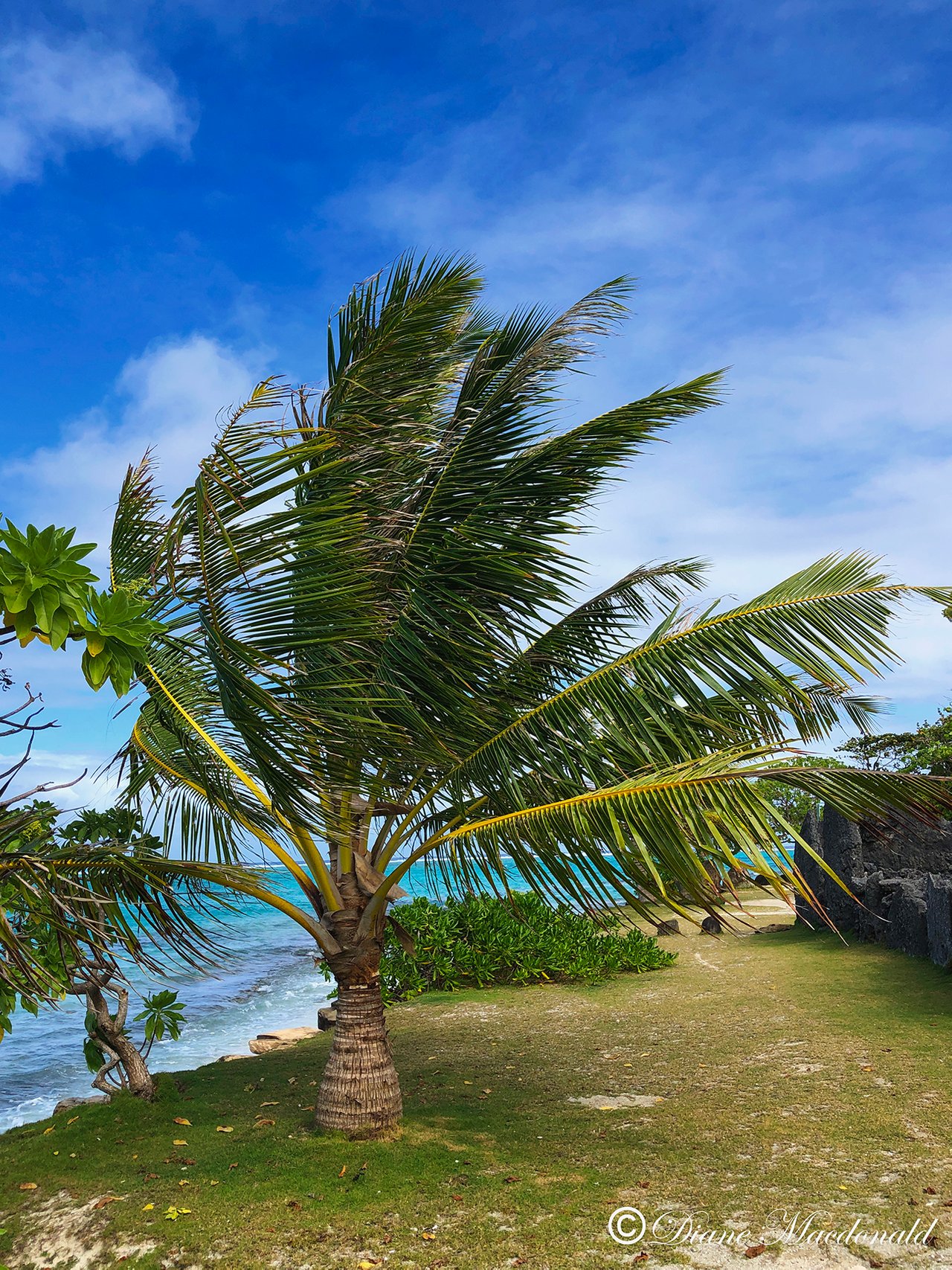
A palm tree by the lagoon at Marae Anini, Huahine: Diane Macdonald - All Rights Reserved
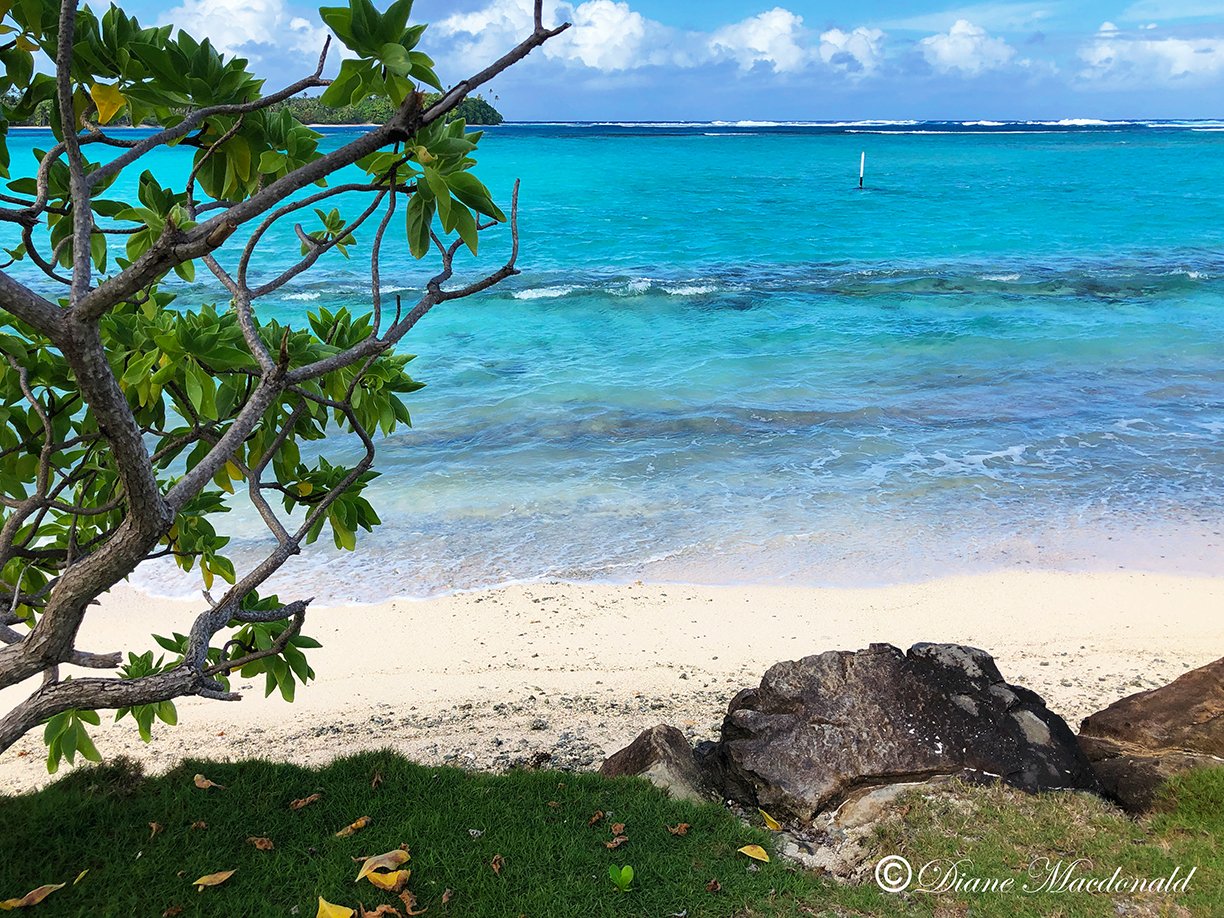
A view of the lagoon at Marae Anini, Huahine:© Diane Macdonald - All Rights Reserved
I couldn't resist posting an image of a couple of frangipani flowers I captured at the roadside on the way to the marae. As I mentioned in my last post, I will be writing a post about the flowers of French Polynesia at a later date, so I am saving most of my flower photographs until then!
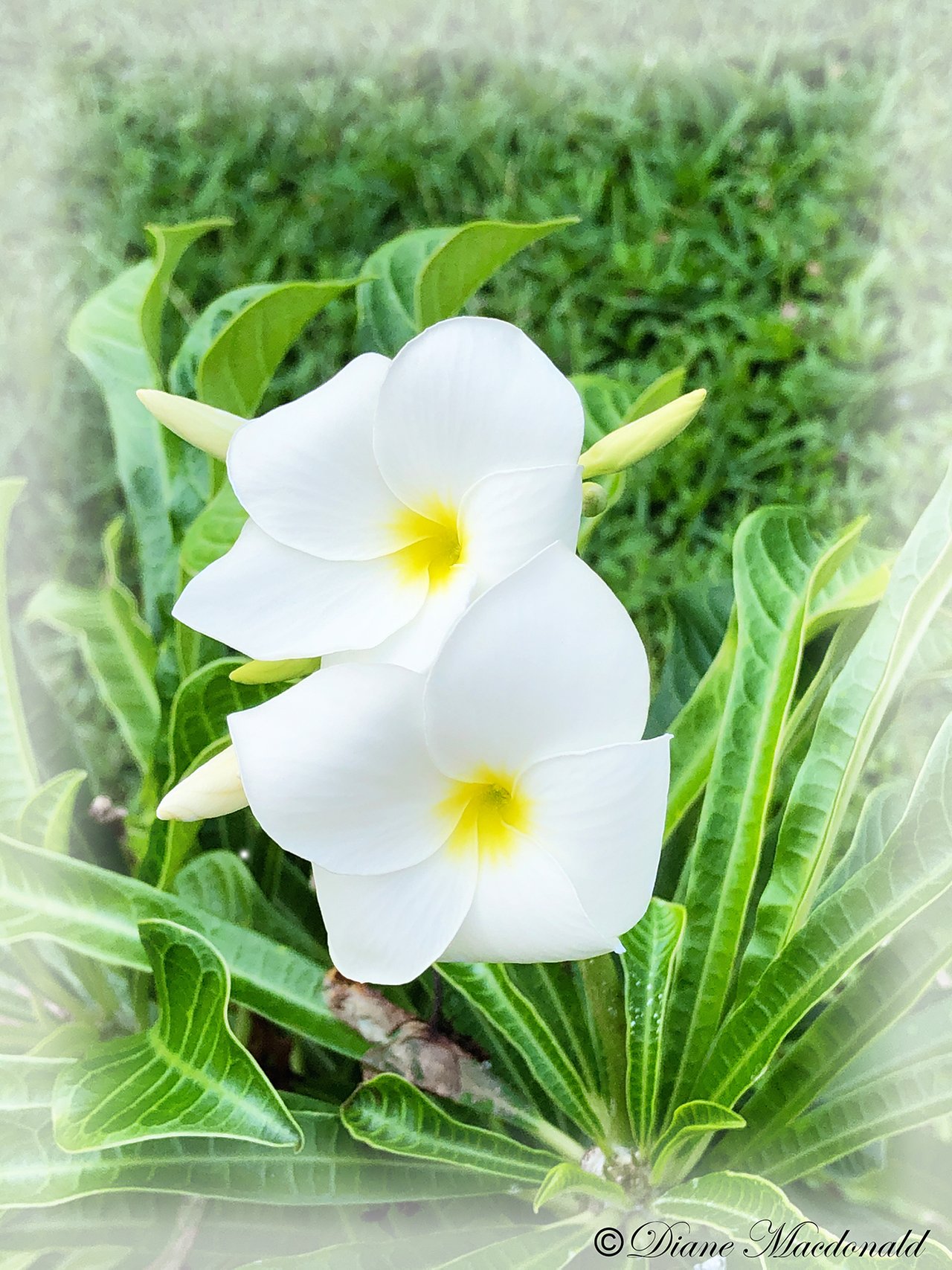
Frangipani flowers: © Diane Macdonald - All Rights Reserved
I hope you enjoyed walking with me to the Marae Anini on Huahine; if so you may want to check out my other posts in this series:
- French Polynesia – A State Of mind
- Moorea French Polynesia – First Impressions And The Resort
- Moorea - French Polynesia – Bali Hai
- French Polynesia – Next Stop Huahine
- 7 Things To Do At Hotel Le Mahana
